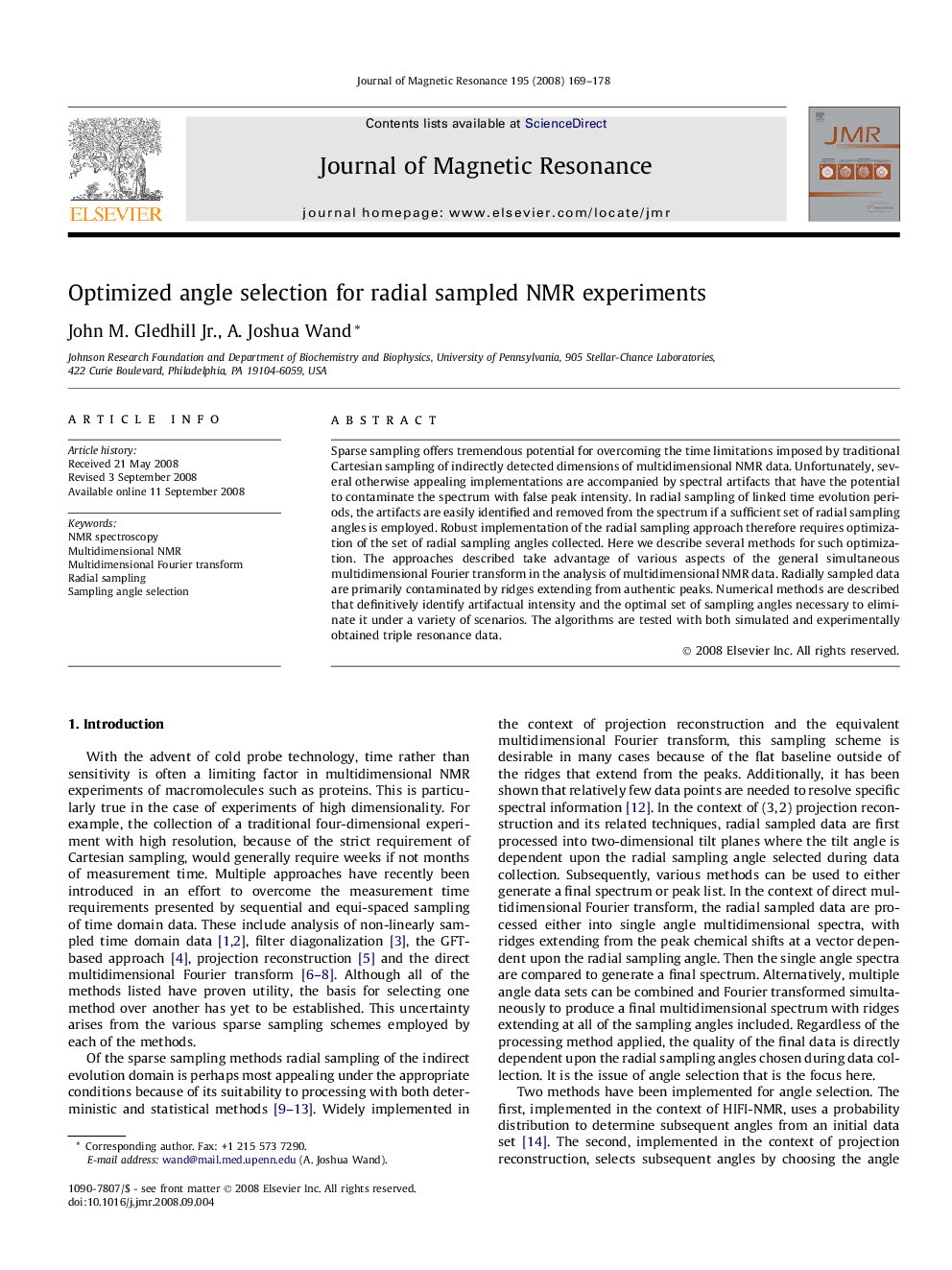| Article ID | Journal | Published Year | Pages | File Type |
|---|---|---|---|---|
| 5407069 | Journal of Magnetic Resonance | 2008 | 10 Pages |
Abstract
Sparse sampling offers tremendous potential for overcoming the time limitations imposed by traditional Cartesian sampling of indirectly detected dimensions of multidimensional NMR data. Unfortunately, several otherwise appealing implementations are accompanied by spectral artifacts that have the potential to contaminate the spectrum with false peak intensity. In radial sampling of linked time evolution periods, the artifacts are easily identified and removed from the spectrum if a sufficient set of radial sampling angles is employed. Robust implementation of the radial sampling approach therefore requires optimization of the set of radial sampling angles collected. Here we describe several methods for such optimization. The approaches described take advantage of various aspects of the general simultaneous multidimensional Fourier transform in the analysis of multidimensional NMR data. Radially sampled data are primarily contaminated by ridges extending from authentic peaks. Numerical methods are described that definitively identify artifactual intensity and the optimal set of sampling angles necessary to eliminate it under a variety of scenarios. The algorithms are tested with both simulated and experimentally obtained triple resonance data.
Related Topics
Physical Sciences and Engineering
Chemistry
Physical and Theoretical Chemistry
Authors
John M. Jr., A. Joshua Wand,
